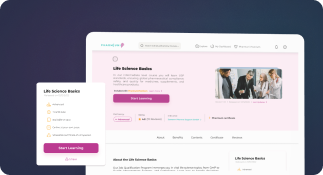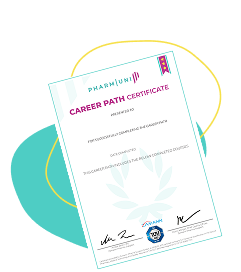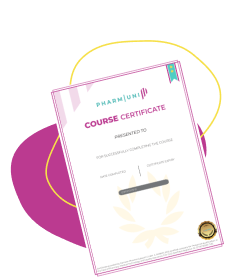Signal detection in pharmacovigilance means finding unexpected patterns in adverse event data that suggest new risks. It supports drug safety by turning raw reports into early warnings, so regulators and pharma companies can react quickly, update information, and design targeted risk-minimisation measures before harm escalates.
WHO’s VigiBase holds over 40 million safety reports from more than 180 member countries, covering nearly 99% of the population, which makes drug safety signal in pharmacovigilance a worldwide task. ECRIN, supporting 50 multinational clinical trials across over 20 European countries, adds high-quality study data that strengthen safety assessments and decisions.
Table of Contents
What Is Signal Detection in Pharmacovigilance?
A signal in pharmacovigilance means a clue that a drug may cause harm. We collect many safety reports and look for repeating patterns across patients.
Single incidents or adverse events describe one person’s problem at one moment. However, a signal groups many similar events and suggests a broader safety concern. Regulators and companies then review the signal and decide what actions to take.
Signal: pattern from multiple related reports.
Incident/adverse event: single case in one patient.
A signal also has a clear purpose in daily drug safety work. Teams use signals to update labels, strengthen warnings, or limit some treatments. Moreover, signals guide new studies that test if the risk truly exists..
Support faster and better safety decisions.
Trigger focused research and closer monitoring.
Types of Safety Signals in Pharmacovigilance
Drug safety teams track new safety information from many sources. Quantitative signals use statistics to spot unexpected patterns or higher reporting rates. Qualitative signals rely on expert case review and judgement. Therefore teams link numbers and stories, sometimes from 50 or even 100 cases.
Literature-based signals come from studies, case reports, and reviews. Class effect signals look across medicines with similar mechanisms. Additionally, teams check if one product issue might affect the whole class. Strong signal patterns then guide label updates or deeper safety studies.
In pharmacovigilance, signals can be quantitative, showing higher than expected reporting rates, or qualitative, based on detailed case stories that suggest clinical or mechanistic concerns.
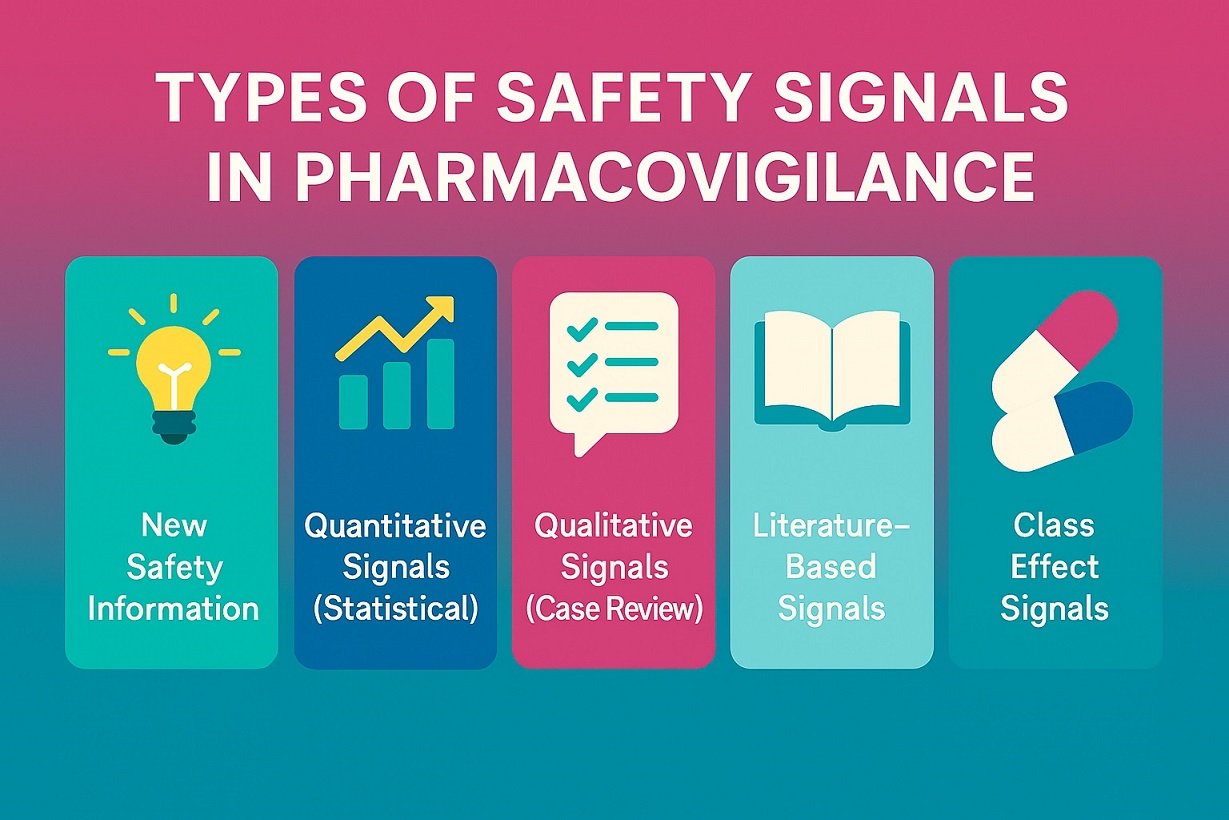
Methods Used in Signal Detection in PV
PV signal detection uses qualitative and quantitative methods to detect safety risks early. Qualitative review examines case reports and clinical narratives so experts judge medical details and decide if patterns look concerning. Quantitative methods scan large safety databases with disproportionality statistics and MedDRA groupings. Emerging tools like machine learning, real-world data, and dashboards further speed and standardize decisions.
Qualitative methods
Quantitative methods
Emerging methods
Qualitative Methods
Qualitative methods in signal detection help experts understand why a potential risk might exist. They focus on clinical details, patient stories, and medical judgement, not just numbers.
Clinical review of individual case safety reports (ICSRs)
Experts read full narratives, labs, and timelines to judge plausibility of a drug–event linkCase series analysis
Teams group similar cases and compare dose, timing, and outcomes across patientsCausality assessment (e.g., WHO-UMC criteria)
Reviewers rate each case as certain, probable, possible, or unlikely based on evidenceMedical literature review
Staff scan journals and case reports for new adverse effects or risk factors
Quantitative (Statistical) Methods
Quantitative (statistical) methods in signal detection help teams scan huge datasets.
They use numbers and models to highlight unusual drug–event patterns for closer review.
Disproportionality analysis (general)
Compares how often a drug–event pair appears versus how often we would expect it by chanceProportional Reporting Ratio (PRR)
Measures if an event is reported more often with one drug than with all othersReporting Odds Ratio (ROR)
Compares the odds of an event with a specific drug versus all other drugsBayesian measures (e.g., Information Component, EBGM)
Use Bayesian statistics and shrinkage to stabilise estimates in sparse data
Emerging Methods
Emerging methods in signal detection build on classic tools and add smarter automation.
They often mix AI, real-world data, and dashboards, but still need human judgement.
Machine learning–based signal scoring
Models rank drug–event pairs by predicted risk, helping teams focus on high-priority signals firstNatural language processing (NLP)
Algorithms read free-text narratives and literature, extract key clinical concepts, and flag potential signalsReal-world data analytics (EHR, registries, claims)
Advanced cohort and sequence models use routine care data to confirm or refute spontaneous report signalsSocial media and patient forum monitoring
Tools scan posts for emerging safety themes, then experts review patterns for credibility and context
Steps in Signal Detection & Signal Management in Pharmacovigilance
Signal detection and signal management in pharmacovigilance show how safety clues become actions. First, teams find possible new risks in data. Then, they decide which ones matter and what to do.
These steps connect raw reports, expert thinking, and regulatory decisions. Therefore, a clear 4-step process helps protect patients and keeps trust in medicines high.
Collect and prepare safety data
Gather reports from HCPs, patients, studies, and literature. Code with MedDRA and clean duplicates.Detect and validate signals
Use qualitative review and statistical methods to find patterns. Check if signals are real and clinically plausible.Assess impact and choose actions
Review seriousness, frequency, and vulnerable groups. Decide on label changes, warnings, extra monitoring, or studies.Implement, communicate, and monitor
Update product information, inform regulators and HCPs, and track follow-up data to see if risks change.
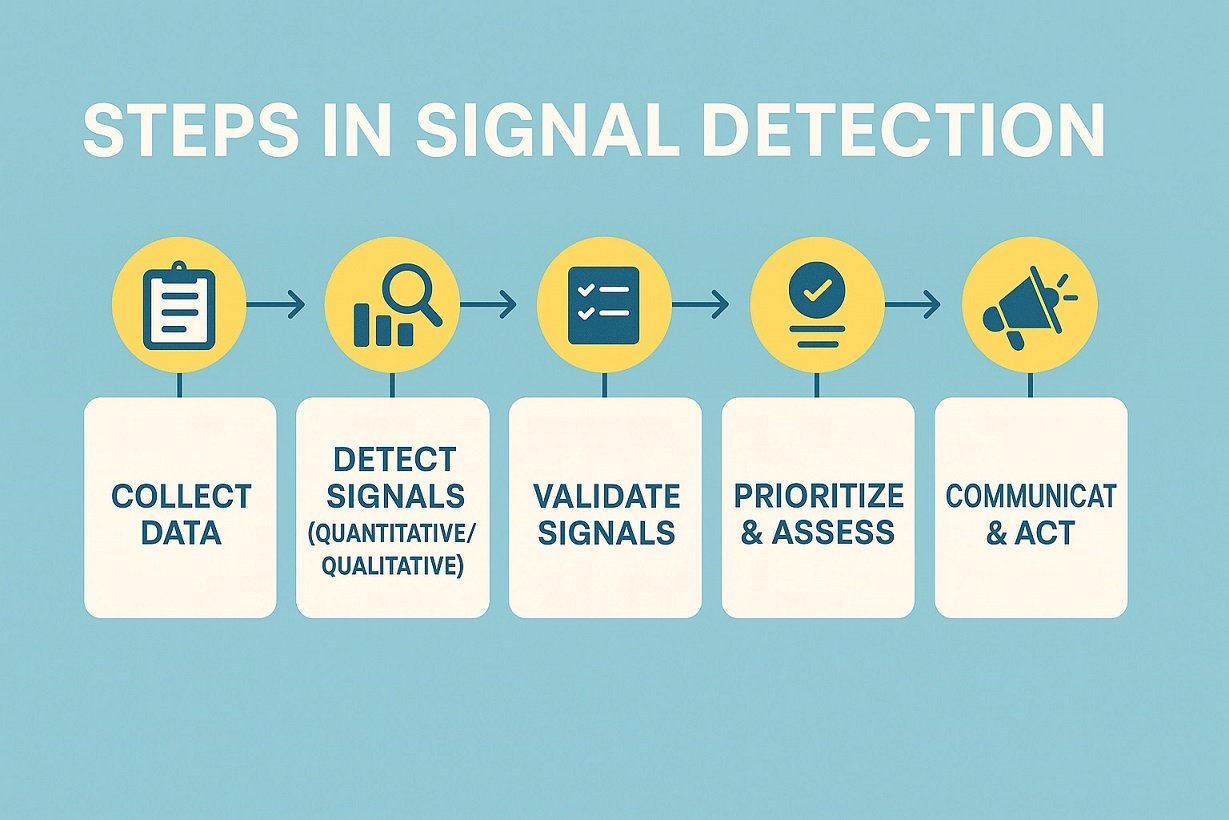
Tools and Databases Used in PV Signal Detection
Signal detection in pharmacovigilance depends on strong safety databases and smart tools. Teams collect adverse event reports and load them into central systems.
These platforms store millions of reports from hospitals, clinics, and patients. Global databases like WHO VigiBase, EudraVigilance, and FDA FAERS support worldwide monitoring.
Global PV databases: VigiBase, EudraVigilance, FAERS.
Regulatory portals: EVDAS dashboards and linked safety systems.
Companies also run internal safety databases that connect with these external systems. Teams log assessments, decisions, and follow-up plans in structured fields. Analysts use statistical software, dashboards, and automation to highlight new signal patterns.
However, people always review outputs, because tools only support final safety decisions.
Company tools: safety databases, signal dashboards, workflow trackers.
Advanced analytics: machine learning, NLP, and real-time monitoring.
Final words; How to Start a Career in Signal Detection
PV signal detection protects patients by turning scattered reports into clear warnings everywhere. WHO’s global programme links over 180 countries and territories, sharing safety reports in VigiBase. More than 37 million anonymised case reports help teams see rare risks and act earlier.
A pharmacovigilance career path in signal detection offers analytical work with impact and purpose. You work with WHO data, clinical details, and statistics to spot new patterns early. Strong skills in data tools and medical thinking matter. To begin, explore Pharmuni pharmacovigilance career path to learn how to start in signal detection.
FAQs:
1️⃣ What is PV signal detection?
Signal detection means finding early clues that a medicine may cause new or increased risks. Teams analyse safety reports and other data to spot unusual drug–event patterns.
2️⃣ Why does signal detection matter for patient safety?
It helps identify problems before they harm many patients. Then companies and regulators can update labels, send warnings, or restrict use.
3️⃣ Who works on PV signal detection?
Drug safety scientists, medical doctors, and data analysts usually share this responsibility. They combine clinical judgement with statistical tools to decide which safety signals need action.
References

Ershad Moradi, a Content Marketing Specialist at Zamann Pharma Support, brings 6 years of experience in the pharmaceutical industry. Specializing in pharmaceutical and medical technologies, Ershad is currently focused on expanding his knowledge in marketing and improving communication in the field. Outside of work, Ershad enjoys reading and attending industry related networks to stay up-to-date on the latest advancements. With a passion for continuous learning and growth, Ershad is always looking for new opportunities to enhance his skills and contribute to pharmaceutical industry. Connect with Ershad on Facebook for more information.

Pharma Industrial Training Certificate: Career Outcomes, Jobs, and ROI (2025)
A Pharma Industrial Training Certificate can significantly enhance your career in the pharmaceutical industry. This certificate equips you with hands-on experience in Good Manufacturing Practices (GMP), documentation, and manufacturing processes—skills that are directly applicable in various pharmaceutical roles.

Certificate in Pharmaceutical Manufacturing: Complete Career Guide (2025)
A Certificate in Pharmaceutical Manufacturing gives you a fast, structured way into GMP-based production roles. You learn core topics such as GMP rules, manufacturing processes, documentation, and QA/QC. In 6–12 months, you move from theory to shop-floor skills and boost your chances of landing a stable pharma job.
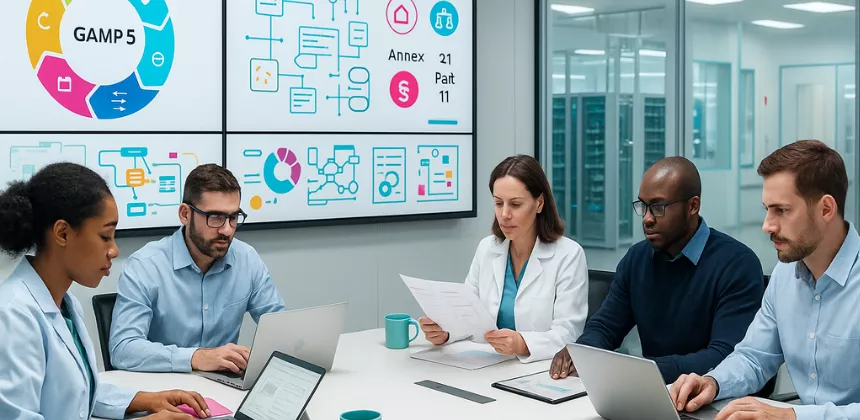
Computer System Validation in Pharma 2025 Guide
Computer System Validation in pharma keeps your digital systems reliable, compliant, and inspection ready. In this practical CSV guide for 2025, you learn core regulations (21 CFR Part 11, EU Annex 11, GAMP 5), step-by-step lifecycle activities, documentation expectations, and job-relevant skills so you protect data integrity and support safe, efficient pharmaceutical operations.
